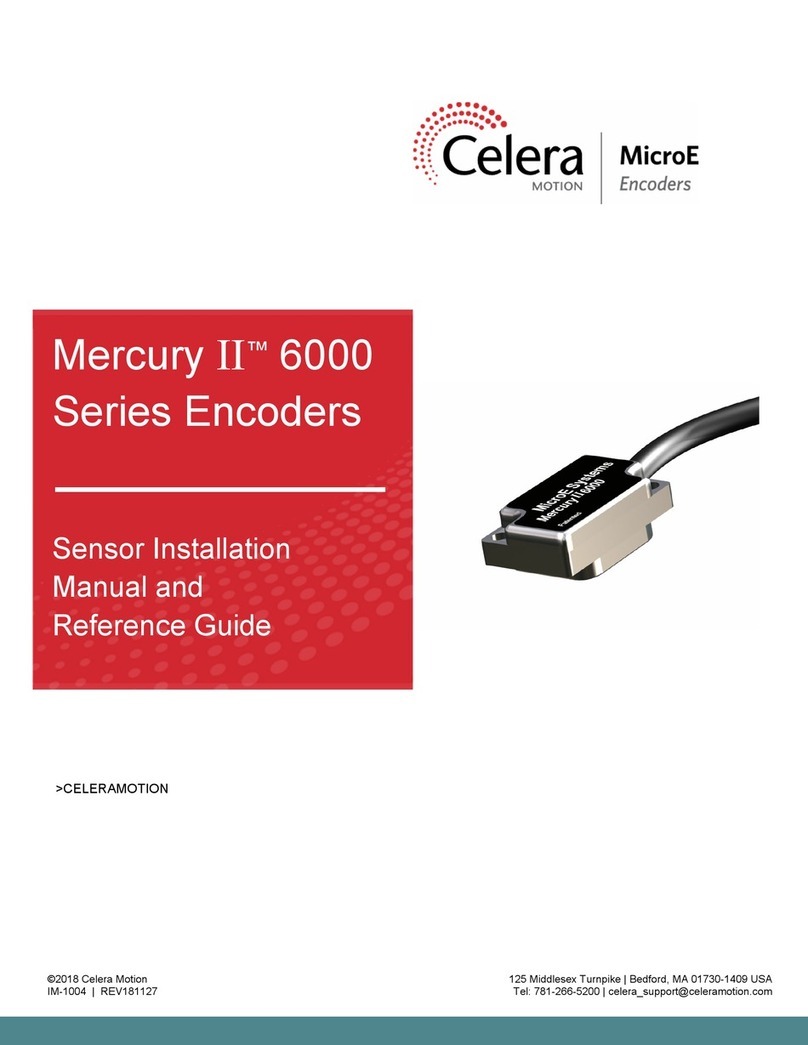
Introduction
IM-ChipEncoder-Series-Rev. 2 Page 1 ©2022 Celera Motion
ChipEncoder Series
Installation Manual and Reference Guide
Table of Contents
1.0 Introduction.......................................................................................................................................2
1.1 Overview .............................................................................................................................2
1.2 Precautions .........................................................................................................................2
1.3 Laser Safety Information.....................................................................................................2
1.4 Standards Compliance........................................................................................................3
1.5 Related Documentation.......................................................................................................3
1.6 Manual Revisions................................................................................................................3
1.7 Trademarks.........................................................................................................................3
1.8 Special Conventions Used..................................................................................................3
2.0 Before Installation.............................................................................................................................4
2.1 Power Recommendations...................................................................................................4
2.2 Installation Considerations..................................................................................................4
2.3 Handling Considerations.....................................................................................................4
2.4 Solder Paste Recommendation and Reflow Profile............................................................5
2.5 Application Notes ................................................................................................................6
2.6 Installation Flowchart...........................................................................................................7
3.0 System Overview .............................................................................................................................8
3.1 ChipEncoder Models...........................................................................................................8
3.2 Linear and Rotary Glass Scales..........................................................................................9
3.3 Evaluation PCB...................................................................................................................9
4.0 ChipEncoder Installation ................................................................................................................10
4.1 Mounting Orientation and Tolerances...............................................................................10
4.2 Mounting the ChipEncoder................................................................................................11
4.2.1 Linear Scale Installation.......................................................................................11
4.2.2 Rotary Scale Installation ......................................................................................12
4.3 Encoder Alignment............................................................................................................13
5.0 Linear Glass Scale Installation.......................................................................................................14
5.1 Before Installation..............................................................................................................14
5.1.1 Items Required for Linear Glass Scale Installation..............................................14
5.1.2 Flowchart for Linear Glass Scale Installation.......................................................14
5.2 Prepare Mounting Surface ................................................................................................15
5.3 Position the Scale..............................................................................................................15
5.4 Mounting the Scale............................................................................................................16
5.4.1 Epoxy Mounted Scale ..........................................................................................16
5.4.2 Adhesive Tape Mounted Scale ............................................................................17
6.0 Cleaning Scales .............................................................................................................................17
7.0 Appendix ........................................................................................................................................18
7.1 Specifications ....................................................................................................................18
7.2 Output Signals Descriptions..............................................................................................19
7.3 Linear and Glass Scales ...................................................................................................20
7.4 Electrical Schematics........................................................................................................22
7.5 Evaluation Board...............................................................................................................24
7.6 Recommended Signal Termination...................................................................................26
7.7 Customer Interface............................................................................................................26
7.8 RS-422 Compatibility.........................................................................................................26
7.9 Troubleshooting.................................................................................................................27
8.0 Order Guide....................................................................................................................................28
9.0 Contacting Celera Motion...............................................................................................................29




























